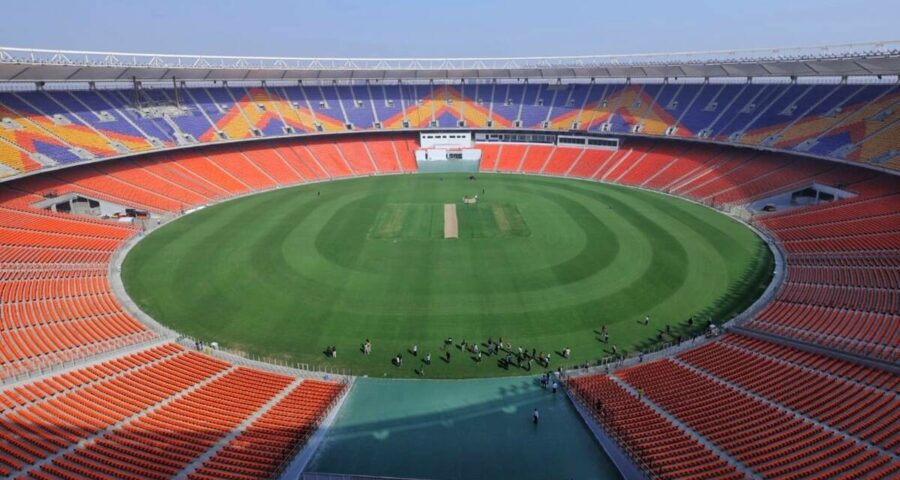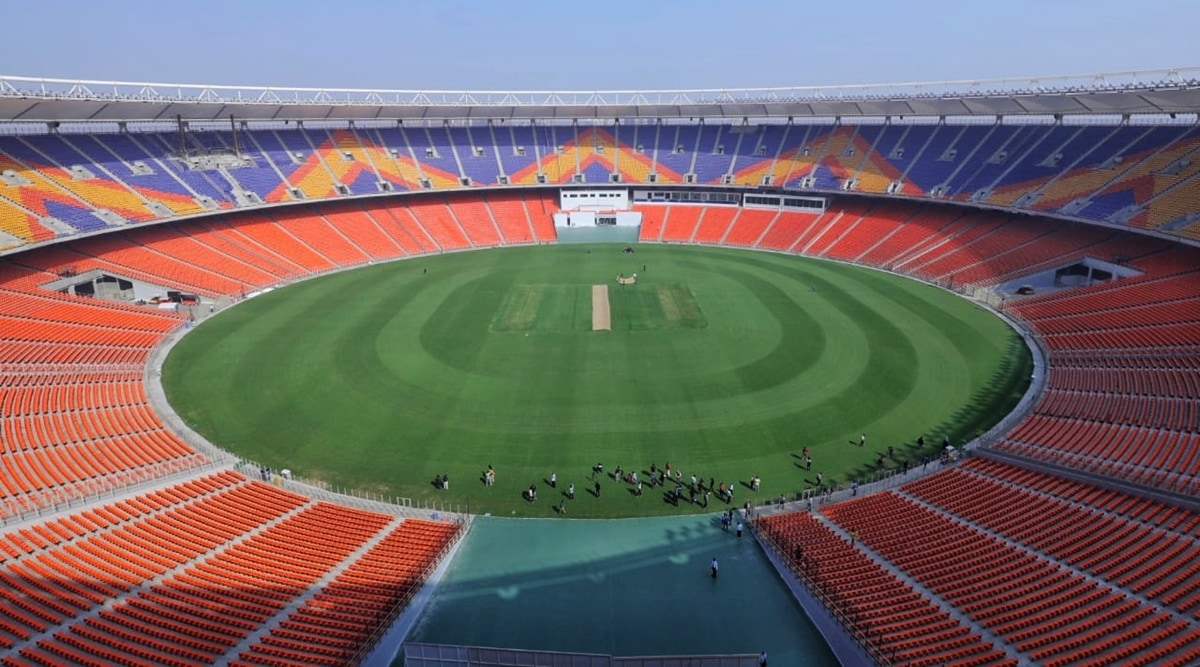If the England team was expecting to bounce right back, thinking that the pink ball and conditions will suit their strengths, they are likely to be disappointed with the pitch on offer at Motera.
Contrary to conventional wisdom about day-night Tests, the pitch for the third India-England Test at Motera is expected to aid spinners. If the England team was expecting to bounce right back, thinking that the pink ball and conditions will suit their strengths, they are likely to be disappointed with the pitch on offer at the world’s largest cricket stadium.
With the 6mm grass cover, considered essential for the pink ball to retain its lacquer for a reasonable period, being done away with, combined with the basic nature of the surface at the venue being a turning track, there’s unlikely to be a great deal of conventional swing or seam on offer for the faster bowlers.
In the only previous pink-ball Test on Indian soil, the home team’s pace bowlers accounted for all the Bangladesh wickets to fall. Things are expected to be a lot different in Ahmedabad though.
A lot at stake
With the match assuming great significance in the race to the World Test Championship final – India can’t afford to lose either of the two remaining Tests of the series – there’s a great incentive to optimise home advantage after the spin-punch floored England in the second Chennai Test to level the series.
“The pitch will be once again going to be a turner. India will look to ride on home advantage as it’s their best chance to qualify for the Test championship final,” a source in the BCCI said.
Hard to pick
The pink ball has more shine and leg-spinner Karn Sharma, who played with it in domestic cricket three season ago, says spinners will enjoy an advantage as it’s difficult to pick its seam.
“It will be tough to read spinners with the pink ball, especially under lights. When I played, I was the highest wicket-taker in the pink-ball Duleep Trophy. The ball shines a lot and it’s tough to read the googly,” he said.
The SG pink Test ball will be used instead of the Kookaburra. During the Kolkata Day-Night Test in 2019, players complained that sighting the ball was a problem.
Under lights, the ball skidded after pitching and went through at great pace which posed a big challenge to the batsmen. The generous grass cover, more than what was provided in the recent day-night Test in Adelaide, made matters even tougher in the twilight period.
Pitch the key
Seasoned domestic batsman Sheldon Jackson said a lot will depend on the playing surface. If there is grass, pacers will come into play but if it’s a turner, it will be tough to pick spinners.
“When we played with the Kookaburra pink ball two years ago, the most difficult part was to pick the ball once lights were on. If it’s a turner, spinner will be tough to read. At the same time, with no use of saliva, maintaining shine of the ball will be a challenge,” Jackson explained.
During a virtual press conference, Cheteshwar Pujara said they are not sure how much the pink ball is going to swing.
“Early on it might swing a bit, but maybe as the match progresses, it might not be a lot of swing. But we never know with the pink ball. It’s very difficult to predict,” he said.
Without the 6mm grass layer and no saliva to apply, the pink ball is expected to lose its shine quicker, and may be conducive for reverse swing earlier than what is the norm in Day-Night Tests.
A different ball game
The SG pink ball’s seam is hand-stitched with a black thread, while the red ball has a white seam. The seam is more pronounced compared to the Kookaburra variety and does not go out of shape that easily. It has an equal mix of synthetic and linen, while the seam on the red ball is purely synthetic. The pink ball also has a generous amount of lacquer.
“This is done to brighten the colour and improve visibility under floodlights. The extra lacquer is used to aid swing and protect it from wear and tear,” Paras Anand, SG marketing director had told The Indian Express.
Source: Read Full Article


